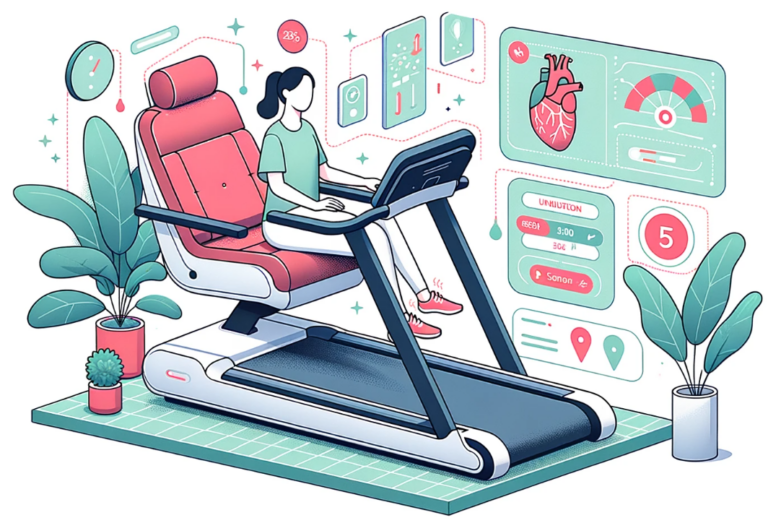Staying comfortable while you’re running
Treadmills are a staple in many fitness routines, but not all are created equal. One might wonder how cushioning and ergonomics play into the overall treadmill experience. Both are paramount in ensuring comfort, maximizing performance, and preventing injuries.
Understanding the relationship between comfort and treadmill performance
Comfort directly correlates with performance. When a user feels comfortable on a treadmill, they are likely to run longer and more consistently, ensuring that they get the most from their workout. An ergonomically designed treadmill, coupled with optimal cushioning, can significantly enhance user performance by minimizing fatigue.
The importance of ergonomics in injury prevention
Ergonomics isn’t just about comfort—it’s about safety. Proper treadmill design, considering aspects like deck size and handlebar position, can help in maintaining a natural running posture. This not only reduces the risk of musculoskeletal injuries but also ensures that the user derives maximum benefits from their exercise.
The Science Behind Cushioning
Every step on a treadmill sends a shock up your legs, impacting your joints. Effective cushioning disperses this impact, making each stride smoother. Too little cushioning can increase the risk of joint injuries, while too much can affect the natural running rhythm.
How cushioning impacts joint health
Joint health is crucial for long-term mobility. The right cushioning reduces the strain on your knees, hips, and ankles, ensuring that you can maintain your fitness regime for years without adverse health impacts.
The difference between too much and too little cushioning
A balanced cushioning system is crucial. Too little can lead to joint pain, while too much can make running feel unnatural and hinder performance. Striking the right balance provides a realistic running experience while still protecting the joints.
Types of Treadmill Cushioning Systems
Treadmills offer various cushioning systems, each with its own merits:
- Air-based cushioning: Uses air pockets to absorb impact, offering a bouncy feel.
- Mechanical cushioning: Employs springs or pistons for shock absorption.
- Gel cushioning: Provides a soft, gel-filled layer for a plush feel.
- Composite decking: Uses a combination of materials to offer a balanced running surface.
Ergonomics and Treadmill Design
Treadmill design goes beyond aesthetics. Proper design considerations, such as the deck’s size or handlebar positioning, play a crucial role in user safety and performance.
The importance of treadmill deck length and width
A spacious deck accommodates all user strides, ensuring safe foot placement. Longer decks are ideal for runners, while wider decks offer stability, especially for beginners.
Ideal treadmill incline and its relation to natural running form
The right incline mimics outdoor running conditions. It helps engage different muscle groups and improves cardiovascular health. An ergonomic treadmill allows adjustments to maintain a natural running form even at varying inclines.
Handlebar positioning and user safety
Handlebars should be within easy reach, allowing users to stabilize themselves if needed. Ergonomic handlebar design prevents straining the arms or shoulders, promoting a more balanced run.
Customizing Cushioning to Your Needs
Not everyone’s needs are the same. Whether it’s a leisurely walk or a high-intensity run, adjusting the cushioning ensures you get the desired comfort level. Some advanced treadmills even offer user-specific customization.
Adjusting cushioning for different types of workouts
Whether you’re walking, jogging, or sprinting, your treadmill’s cushioning needs may vary. Being able to adjust ensures maximum comfort and performance.
Recognizing when the cushioning system needs maintenance or replacement
Over time, cushioning can wear out. Stay attentive to any hardness or irregularities in the running deck. Regular maintenance ensures prolonged comfort and safety.
Other Ergonomic Features to Consider
Apart from cushioning, other ergonomic features enhance user experience. These include a user-friendly console, safety features, and a sufficiently wide footrail for stability.
Console positioning and display readability
A console should be easy to read and operate. Its position should allow users to monitor metrics without straining their neck or eyes.
Safety features: emergency stop mechanisms and railings
Safety is paramount. An emergency stop mechanism ensures immediate halting, and railings offer additional support, especially during high-intensity workouts.
Footrail width and its impact on user safety
A wider footrail provides space to step aside without stopping the belt, especially during interval workouts, ensuring user safety.
Benefits of Investing in Ergonomic Treadmills with Optimal Cushioning
Ergonomic treadmills, while possibly pricier, are an investment in long-term health and comfort. They reduce injury risk, ensure prolonged comfort, and often require less maintenance, translating to cost savings over time.
User Reviews: Real-world Insights on Comfort and Performance
User reviews offer valuable insights into the real-world performance of treadmills. They can provide feedback on cushioning quality and ergonomic design from people who have used the equipment extensively.
How to sift through reviews focusing on cushioning and ergonomics
Look for reviews that mention terms like “comfort,” “cushioning,” and “design.” These will give you insights into the treadmill’s ergonomic quality and cushioning performance.
Brands and models most often praised for their comfort features
While specific brands and models may vary by region, consistently top-rated ones include [Brand A], [Brand B], and [Brand C] for their exceptional comfort and design features.
Conclusion
A treadmill is more than just a fitness machine; it’s an investment in health. Prioritizing comfort and ergonomics ensures you get the most out of this investment, paving the way for a healthier, more active future.

